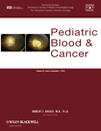A palliative prognostic score for terminally ill children and adolescents with cancer†
Conflict of interest: Nothing to declare.
Abstract
Background
The loss of a child is considered the hardest moment in a parent's life. Studies addressing length of survival under pediatric palliative care are rare. The aim of this study was to improve a survival prediction model for children in palliative care, as accurate information positively impacts parent and child preparation for palliative care.
Procedure
Sixty-five children referred to a pediatric palliative care team were followed from August 2003 until December 2006. Variables investigated (also included in previous studies) were: diagnosis, home care provider, presence of anemia, and performance status score given by the home care provider. Clinical variables such as symptom number were also used to test the score's ability to predict survival.
Results
The length of survival prognostic score was validated using the above variables. The number of symptoms at transition to palliative care does not improve the score's predictive ability. The sum of the single scores gives an overall score for each patient, dividing the population into three groups by probability of 60-day survival: Group A 80.0%, Group B 38.0%, and Group C 28.5% (P < 0.001).
Conclusion
A pediatric palliative care score based on easily accessible variables is statistically significant in multivariate analysis. Factors that increase accuracy of life expectancy prediction enable adequate information to be given to patients and families, contributing to therapeutic decision-making issues. Pediatr Blood Cancer. 2010;55:1167–1171. © 2010 Wiley-Liss, Inc.




